The new pink sapphire version of the piece dances with its wearer in the brand’s “Icons After Dark” holiday campaign.
70% of Consumers Are Interested in Ethically Sourced Gold
That number is expected to increase as Generation Z gets older and, hopefully, starts buying more jewelry, the World Gold Council found in a new survey.

The London-based organization questioned more than 18,000 investors and consumers in six countries—the United States, India, China, Canada, Germany and Russia—to discern their attitudes about gold as an investment and adornment.
Overall, the survey found that among the 6,115 consumers surveyed, 48 percent have bought gold in the past/would consider buying again, while 38 percent have never bought gold but haven’t ruled it out as a purchase.
Only 13 percent said they will never buy gold.
The survey also showed consumers are interested in where their gold comes from and what impact it has on the people who mine it.
And the younger consumers are, the more concerned they’re likely to be.
The Conscious Consumer
Ethical and environmental issues do not necessarily stop potential gold buyers from getting a piece, with only 23 percent of survey-takers citing these concerns as a barrier to purchase.
But when describing their ideal gold jewelry purchase, 70 percent of gold jewelry buyers said they would like to purchase pieces that are “produced ethically,” with minimal impact on the environment and fair and modern working conditions for those who mine it.
In an interview with National Jeweler on Monday, World Gold Council Director of Market Intelligence Alistair Hewitt said consumers want more information about the origin of their gold, and the industry could do a better job educating them.
“Responsibly sourced and responsibly mined gold is hugely important, and the vast majority of the gold mined in this world is produced in a responsibly sourced way,” he said.
“More could be done in communicating that to end consumers.”
Environmental concerns are particularly pronounced among Gen Z consumers, who are roughly 9 to 22 years old (though only those ages 18-22 were included in the survey).
Some members of this up-and-coming generation feel they face an uncertain future due to environmental destruction; they are the generation staging school strikes over climate change, sparked by one of their peers, 16-year-old Greta Thunberg of Sweden.
In the U.S., 18 percent of consumers ages 39 and up and 19 percent of millennials (ages 23-38) said they would buy gold jewelry within the next 12 months. That number slips to 11 percent among Gen Zers.
The biggest drop-off in Gen Z purchases of gold is in China, where only 12 percent of consumers in this age group intend to buy gold jewelry in the next year, compared with 37 percent of millennials and 42 percent of those age 39 and up.
Hewitt said this largely due to a shift in values, as younger Chinese consumers, brought up in a world in which they have more income, technology and choices, do not have the same connection to gold as their parents.
“It’s a real battle to engage with these people because they don’t necessarily want to be going into a jewelry store buying jewelry. They might want to be going off and enjoying a holiday [instead].
“The experiential purchase is hugely significant in Gen Z across the board, but especially in China. There’s even more intense competition for a share of their wallet that’s drawing their attention away [from jewelry].”
Social and environmental concerns around gold are expected to become more important in the years ahead as more members of Gen Z age into adulthood.
As the report put it: “As they become older, and richer, this will become even more relevant.”
Other Takeaways
Here are five more points of interest from the World Gold Council’s survey on gold jewelry buying.
— Trust is an issue. Among those surveyed who said they’ve never bought gold jewelry but would consider it, 28 percent said a lack of trust was a significant barrier to purchase, with 19 percent concerned about the metal’s purity (18 karat, 14 karat, etc.) being as represented and 14 percent saying they don’t trust the retailers who sell gold.
— Online sales lag. Among competitors, gold jewelry is the least likely (14 percent) to be bought online, trailing silver (21 percent), diamonds (17 percent) and platinum (25 percent).
Hewitt said wedding purchases in India and China, which are traditionally done in person, contribute to gold’s falling behind online.
The report noted: “If buyers are convinced by a website’s trustworthiness, and the ability to return items, and they are engaged in a purchasing experience within a secure environment, they will be more likely to use an online platform.”
— Millennials in the U.S. pick rose gold more often than older consumers. Among those ages 23-38, 31 percent said they bought or received a piece of rose gold jewelry in the past 12 months, compared with 15 percent of those age 39 and up.
— Gen Yers also like white gold. Among those ages 23-38, 35 percent received a piece of jewelry that is white gold, compared with 30 percent of those ages 39 and up.
The percentage comparisons for yellow gold were 51 and 62, respectively.
— For some, gold is too “flashy.” Three-quarters of gold considerers globally don’t buy because of “fashion barriers.” They feel gold can come across as “too flashy” and may opt for silver or diamonds instead, the survey states.
A microsite detailing the findings on a more granular level, RetailInsights.gold, went live Tuesday morning.
Hewitt said WGC will complete more detailed reports for each country, including the U.S., and hopes to publish them in the next six months.
“This is a big, high-level thematic report. The real value for the industry, I think, will probably come when we delve down into the country and sector-specific reports,” he said.
The Latest

A choice that’s generated a lot of commentary, Pantone says “Cloud Dancer” marks a fresh start and encourages relaxation and creativity.
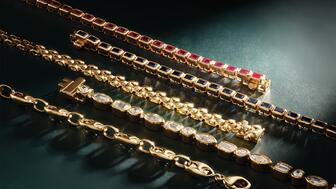
The manufacturer’s holiday campaign features a gift guide filled with trending designs and jewelry that can be personalized.

How Jewelers of America’s 20 Under 40 are leading to ensure a brighter future for the jewelry industry.

The man was charged with theft, accused of ingesting the necklace while in a jewelry store in Auckland, New Zealand.


The Florida independent expanded its store from 8,000 to 14,000 square feet, fulfilling the vision of its late co-founder, Jim Dunn.
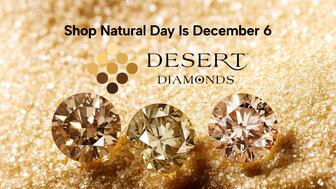
Sponsored by De Beers Group

Roseco’s 704-page catalog showcases new lab-grown diamonds, findings, tools & more—available in print or interactive digital editions.
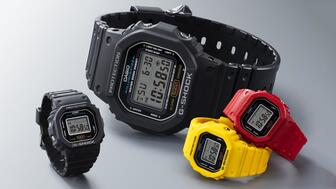
The classic 5600 series G-Shock has been scaled down to about a tenth of its size, becoming a fully functioning watch ring.

The association’s annual conference and gala will take place Feb. 4, 2026, during the Tucson gem shows.

The January show will include a workshop for jewelry retailers on implementing AI to strengthen their businesses.
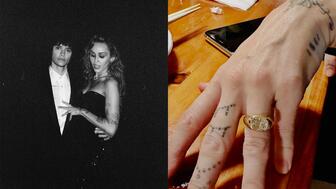
Fellow musician Maxx Morando proposed to the star with a chunky, cushion-cut diamond ring designed by Jacquie Aiche.

The retailer, which sells billions in fine jewelry and watches, is suing the Trump administration and U.S. Customs and Border Patrol.
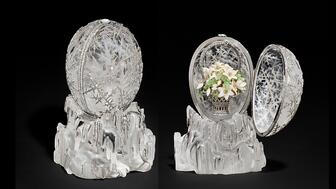
The historic egg, crafted for Russia's ruling family prior to the revolution, was the star of Christie’s recent auction of works by Fabergé.
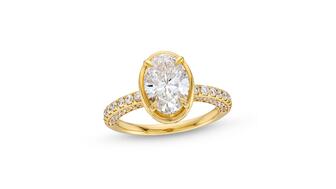
The retailer offered more fashion jewelry priced under $1,000, including lab-grown diamond and men’s jewelry.
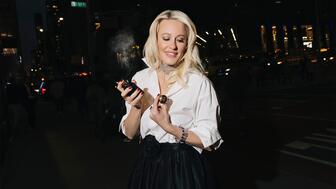
The eau de parfum is held in a fluted glass bottle that mirrors the decor of the brand’s atelier, and its cap is a nod to its “Sloan” ring.

Vivek Gadodia and Juan Kemp, who’ve been serving as interim co-CEOs since February, will continue to lead the diamond mining company.

In addition, a slate of new officers and trustees were appointed to the board.
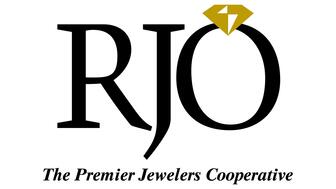
Witt’s Jewelry in Wayne, Nebraska, is the organization’s new milestone member.

Laurs is the editor-in-chief of Gem-A’s The Journal of Gemmology and an expert on the formation of colored gemstone deposits.
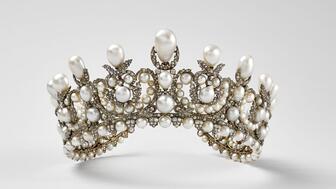
The man, who has a criminal history, is suspected of being the fourth member of the four-man crew that carried out the heist.
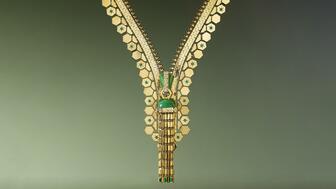
The single-owner collection includes one of the largest offerings of Verdura jewels ever to appear at auction, said Christie’s.

Michael Helfer has taken the reins, bringing together two historic Chicago jewelry names.
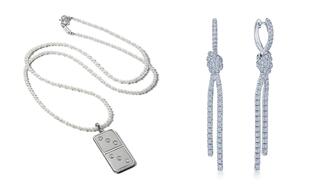
The guide features all-new platinum designs for the holiday season by brands like Harwell Godfrey, Ritani, and Suna.
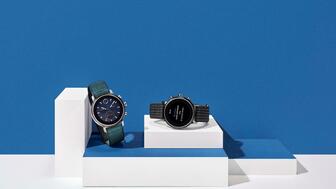
During its Q3 call, CEO Efraim Grinberg discussed the deal to lower tariffs on Swiss-made watches, watch market trends, and more.
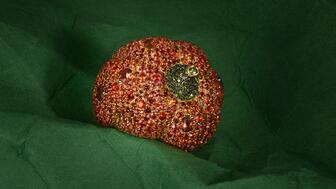
Rosior’s high jewelry cocktail ring with orange sapphires and green diamonds is the perfect Thanksgiving accessory.

The “Embrace Your True Colors” campaign features jewels with a vibrant color palette and poetry by Grammy-nominated artist Aja Monet.

























